You’ll achieve superior pest control by mastering proper dilution ratios—mix 1.5-3 oz concentrate per gallon based on your target pest. Apply during calm mornings or evenings when pollinators aren’t active, ensuring you spray both leaf surfaces for complete coverage. Always check weather forecasts to avoid rain within 24 hours, and store products in cool, dry locations while labeling bottles clearly. Monitor pest populations regularly to determine reapplication timing, and follow label instructions for pre-harvest intervals to maximize your garden’s protection potential.
Understanding Proper Dilution Ratios for Maximum Effectiveness
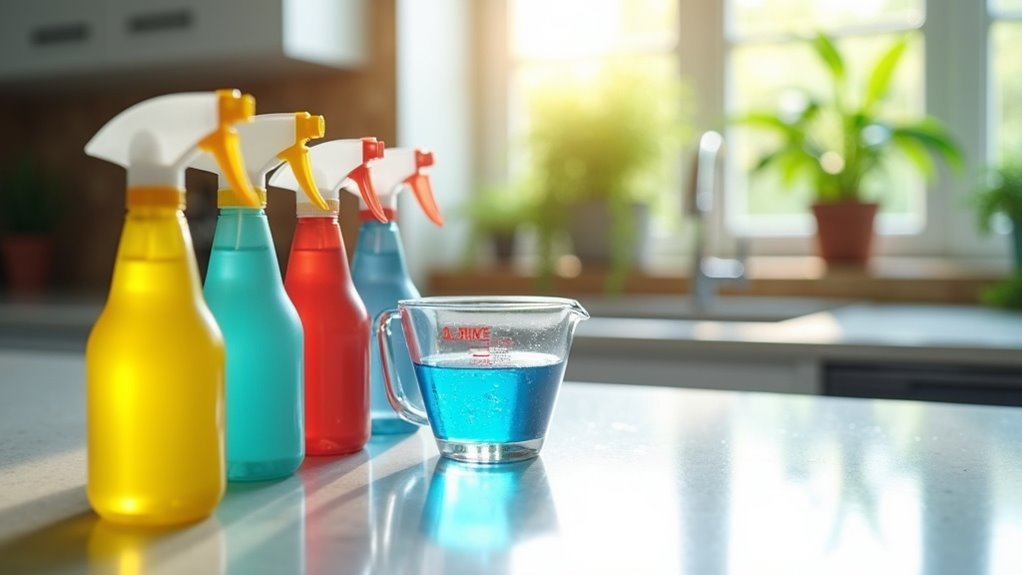
Two critical factors determine whether your pest control efforts succeed or fail: using the correct dilution ratio and applying it properly.
For most Sevin applications, you’ll want to mix 1.5 to 3.0 fl oz of concentrate per gallon of water to achieve effective pest control. Different plants require specific mixing ratios—tomatoes need 1.5 oz per gallon, while apple trees require 3 oz per gallon for prime results.
Remember that 1.5 fl oz equals 3 tablespoons, making measurement simpler. Always check your product’s label for precise dilution instructions tailored to specific plants, as this prevents damage and guarantees maximum effectiveness.
Apply your properly mixed solution within 24 hours, as it can lose potency and change in color and smell afterward.
Timing Your Application for Optimal Pest Control Results
Getting your dilution ratios right means nothing if you apply the spray at the wrong time. Timing your application is essential for ideal pest control results and maximum effectiveness.
Apply during morning or evening hours to protect plants from heat damage and minimize pollinator activity. Choose calm days for full coverage without drift issues. Always check your product label for specific frequency guidelines and pre-harvest intervals, as these vary markedly between crops.
| Plant Type | Maximum Applications | Pre-Harvest Interval | Notes |
|---|---|---|---|
| Tomatoes | 7 per year | 3-7 days | Check label specifics |
| Sweet Corn | 8 per year | 1-3 days | Varies by product |
| Leafy Greens | 4-6 per year | 7-14 days | Shorter intervals common |
Allow 24 hours drying time before rain to prevent wash-off. Plan reapplication schedules according to label instructions for sustained protection.
Achieving Complete Coverage on All Plant Surfaces
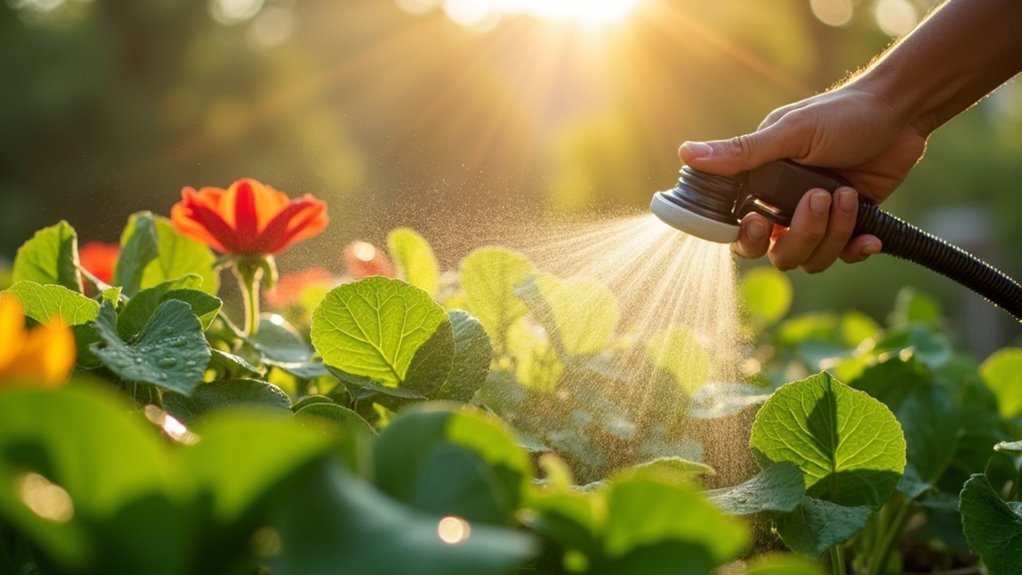
Most pest control failures stem from incomplete coverage that leaves insects with safe havens to regroup and multiply.
You’ll need thorough application techniques to achieve complete spray coverage on every plant surface. Target both upper and lower surfaces of leaves where pests commonly hide. Use a coarse nozzle for spot treatments and a fan nozzle for larger areas to guarantee even distribution. Aim your sprayer upward to reach hidden spots underneath foliage.
Apply during calm morning or evening conditions to minimize drift and maximize adherence to plant surfaces. Remember: “No pest left behind!” This approach ensures you won’t miss any areas where insects could survive and restart their population cycles.
Protecting Beneficial Insects During Treatment
While effective pest control requires thorough coverage, you’ll want to protect the beneficial insects that keep your garden’s ecosystem balanced.
Effective pest management means striking the right balance between eliminating harmful insects and preserving the beneficial ones your garden depends on.
When applying insecticides like Sevin, timing and technique make all the difference for safeguarding pollinators and other helpful species.
- Dawn patrol spraying – Apply treatments in early morning or late evening when bees are tucked away in their hives
- Bloom avoidance – Skip spraying open blooms where pollinators actively forage for nectar and pollen
- Undersides targeting – Focus applications on undersides of leaves where pests hide, leaving beneficial insects’ preferred surfaces untreated
- Natural alternatives – Consider organic options like neem oil or beneficial predator insects before reaching for chemical solutions
Always read label instructions carefully to understand specific pollinator precautions and explore natural pest control methods when possible.
Weather Considerations and Wind Management
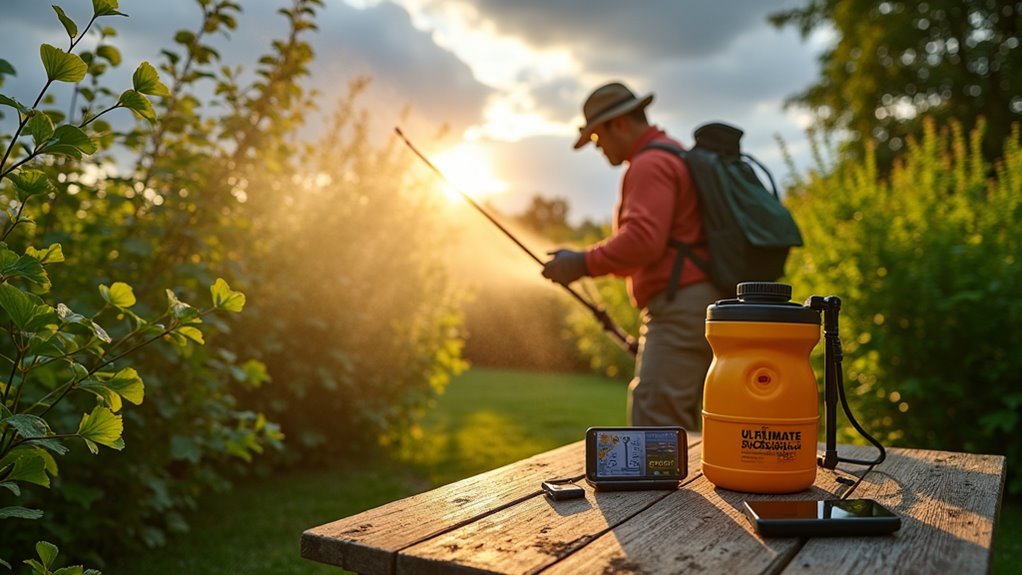
When you’re planning your pest spray application, timing and weather conditions can make or break your treatment’s effectiveness.
You’ll want to choose calm mornings or evenings when temperatures are cooler and wind speeds are minimal to prevent drift to unintended areas.
Always check the weather forecast to guarantee you won’t face rain within 24 hours, which could wash away your carefully applied treatment.
Optimal Application Timing
Timing your pest spray application correctly can mean the difference between successful pest control and wasted effort. Apply insecticide during ideal application timing when temperatures are cooler and pollinators are less active to minimize harm to beneficial insects. Avoid spraying during midday heat when products evaporate quickly, reducing effectiveness.
Consider these timing strategies:
- Dawn application: Cool morning air prevents drift while beneficial insects remain dormant.
- Evening treatment: Reduced wind and lower temperatures create perfect spraying conditions.
- Weather monitoring: Check weather forecasts to avoid rain expected within 24 hours.
- Post-application patience: Allow the treated area to dry completely before watering.
Strategic timing protects non-target species while ensuring maximum pest elimination.
Wait at least 24 hours after application before introducing moisture to maximize effectiveness of your treatment investment.
Wind Drift Prevention
Beyond choosing the right time of day, weather conditions play an equally important role in successful pest control applications. When you apply insecticides during calm mornings, you’ll minimize wind drift and achieve a more targeted application directly onto your plants. Avoid windy conditions entirely, as even light breezes can carry chemicals away from intended areas, potentially harming beneficial insects.
| Wind Condition | Application Strategy | Equipment Choice |
|---|---|---|
| Calm (0-3 mph) | Ideal for spraying | Fan spray nozzle for broad coverage |
| Light breeze (4-7 mph) | Proceed with caution | Narrow spray pattern preferred |
| Moderate wind (8+ mph) | Postpone application | Wait for better conditions |
| Variable winds | Monitor continuously | Be ready to stop immediately |
Always check weather forecasts and select days with low wind speeds for best results.
Monitoring and Reapplication Strategies
Effective pest control requires vigilant observation of your garden’s changing conditions and pest activity levels.
Successful gardening demands consistent monitoring of pest populations and environmental changes that affect treatment timing.
You’ll need to monitor pest populations regularly to determine when reapplication of Sevin Concentrate becomes necessary, particularly after heavy rain events.
Different crops require specific intervals and application limits for peak effectiveness while maintaining food safety standards.
Follow these reapplication guidelines:
- Tomatoes: Maximum 7 applications per season, stopping 3 days before harvest
- Sweet corn: Up to 8 treatments yearly, avoiding applications within 2 days of harvest
- Knockout roses: 6 treatments maximum annually, spacing applications at least 7 days apart
- Post-rain timing: Wait 24 hours after product dries before reapplying
Always consult the product label for specific instructions and maintain proper intervals between applications.
Safe Storage and Equipment Maintenance Practices
While proper application techniques guarantee immediate pest control success, maintaining your equipment and storing products correctly will protect your investment and confirm consistent results over time.
Store insecticides like Sevin Concentrate in cool areas away from direct sunlight to maximize shelf life up to five years. Keep your product container tightly sealed to prevent contamination and degradation.
Clean spraying equipment thoroughly after each use to avoid chemical interactions that reduce effectiveness. Use dedicated spray bottles for different products and label clearly to prevent dangerous mix-ups.
Shake the bottle every few months if not used regularly to keep active ingredients properly mixed. These safe storage and maintenance practices confirm your pest control arsenal remains potent and ready when needed.
Frequently Asked Questions
How Much Sevin Concentrate per Gallon of Water?
You’ll mix 1.5-3.0 fluid ounces of Sevin concentrate per gallon of water. Use 1.5 ounces for tomatoes and roses, or 3 ounces for apple trees, depending on your target pest.
How Long After Spraying Sevin Can You Water?
You should wait at least 24 hours after spraying Sevin before watering the treated area. This guarantees the product’s dried completely and won’t wash off, maximizing its effectiveness against pests.
What Bugs Are Killed by Sevin?
Sevin kills over 500 insect pests you’ll encounter in your garden, including aphids, leaf-eating insects, webworms, and stink bugs. Its active ingredient, Zeta Cypermethrin, eliminates these pests through contact within minutes.
Does Bugmd Essential Pest Concentrate Work?
You’ll find Bugmd Essential Pest Concentrate effectively eliminates ants, roaches, and spiders using natural ingredients. Users report fast results within hours, and it’s safe for indoor use around pets and children.
In Summary
You’ve got the essential knowledge to maximize your concentrated pest spray’s effectiveness. Remember to dilute properly, time applications strategically, and guarantee complete coverage while protecting beneficial insects. Don’t ignore weather conditions, monitor your results for reapplication needs, and maintain your equipment safely. With these seven tips, you’ll achieve superior pest control results while minimizing environmental impact. Stay consistent with your approach, and you’ll see lasting protection for your plants.


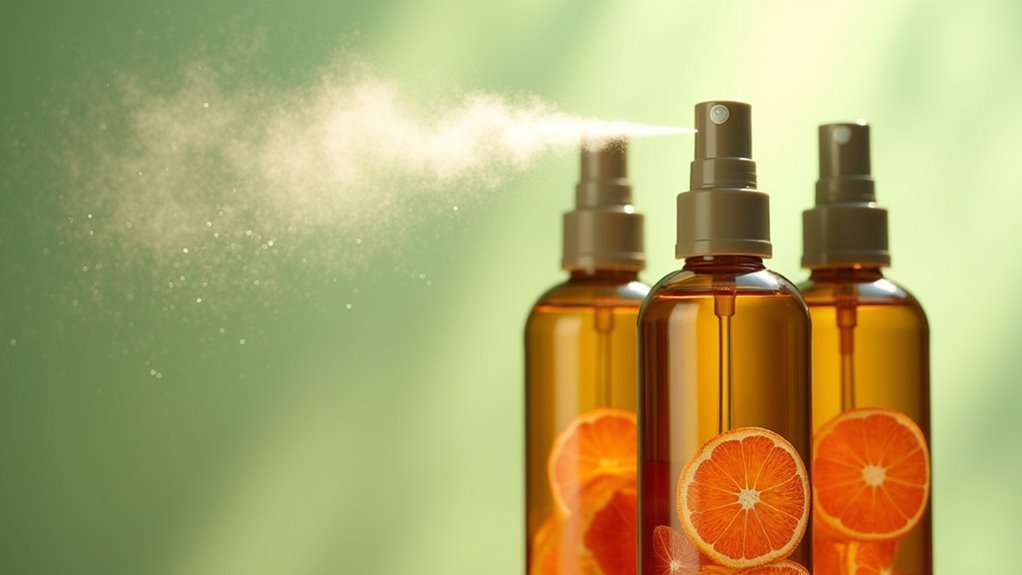
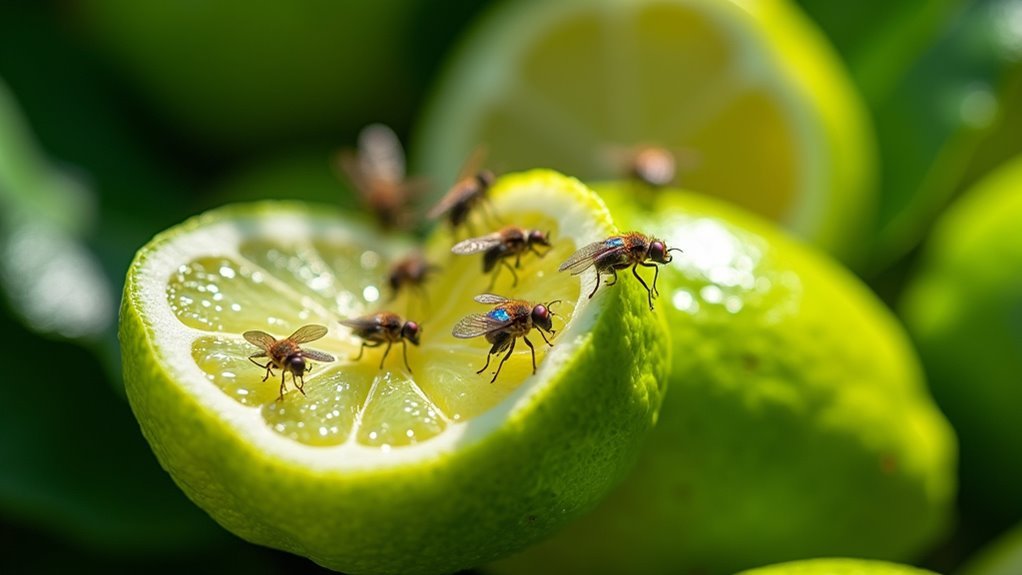
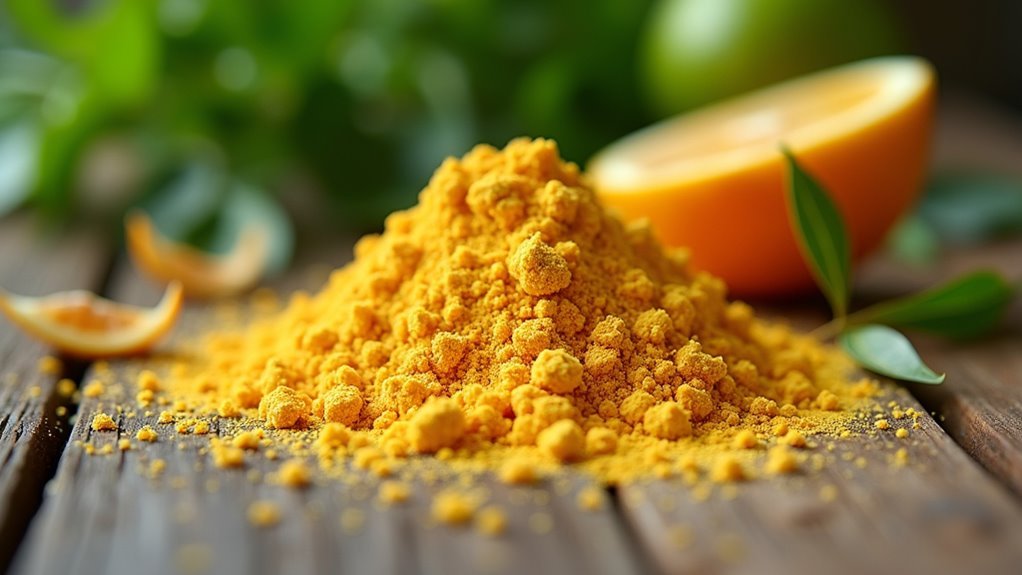
Leave a Reply